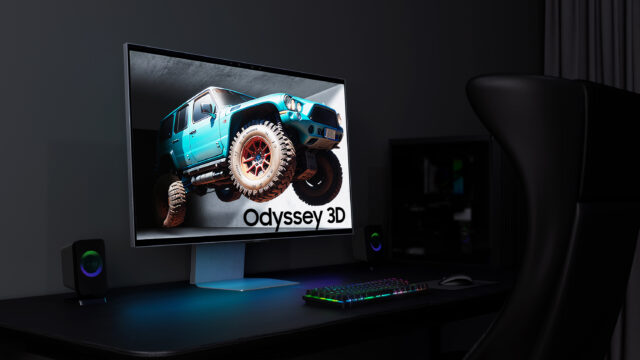Samsung is starting 2025 with a fresh attempt at popularizing 3D displays. Announced today, Samsung’s Odyssey 3D is the follow-up to prototypes that Samsung demoed at last year's CES technology trade show. This year, Samsung is showing off a final product, which is supposed to make 2D content look 3D.
Those who have dealt with 3D glasses may be relieved to hear that the Odyssey 3D doesn't require them. According to the South Korean company’s announcement, the monitor's use of a lenticular lens that is “attached to the front of the panel and its front stereo camera" means that you don't have to wear glasses to access the monitor's “customizable 3D experience.” Lenticular lenses direct different images to each eye to make images look three-dimensional. This is a notable advancement from the first 3D monitor that Samsung released in 2009. That display used Nvidia software and Nvidia shutter glasses to allow users to toggle between a 2D view and a 3D view through a few button presses and supported content.
Another advancement is the Odyssey 3D's claimed ability to use artificial intelligence “to analyze and convert 2D video into 3D.” We’ve recently seen similar technology from brands like Acer, which announced portable monitors in 2022 and then announced laptops that could convert 2D content into stereoscopic 3D in 2023. Those displays also relied on AI, as well as a specialized optical lens and a pair of eye-tracking cameras, to create the effect. But unlike Acer's portable monitors, Samsung claims that its monitor can make 2D content look like 3D even if that content doesn’t officially support 3D.

“The Odyssey 3D’s ... light field display ... technology creates lifelike 3D images from 2D content by using a lenticular lens on the front panel. Combined with eye tracking and view mapping technology, Odyssey 3D ensures an optimized 3D experience without the need for separate 3D glasses. Eye tracking monitors the movement of both eyes using a built-in stereo camera, while view mapping continuously adjusts the image to enhance depth perception,” Samsung said in a press announcement.



 Loading comments...
Loading comments...
